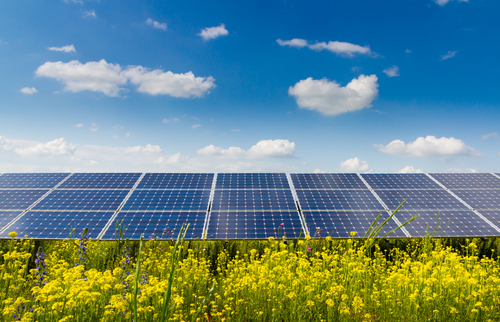As the summer sun rises high in the sky, its intense rays bring more than just warmth and longer days. They offer a golden opportunity to tap into one of the most abundant and sustainable sources of energy – solar power. The utilization of solar energy in summer has gained significant traction in recent years, as individuals, businesses, and governments seek cleaner and more sustainable alternatives to conventional energy sources. This article explores the benefits, challenges, and innovations surrounding solar energy during the summer months.
The Power of Solar Energy
Solar energy is harnessed through the collection of sunlight and its conversion into electricity or heat. During the summer, the Earth’s axial tilt exposes specific regions to more direct sunlight for an extended period, leading to an increase in solar radiation. This heightened exposure presents an ideal scenario for solar power systems, making summer an opportune time to maximize energy production.
Benefits of Solar Energy in Summer
- Increased Energy Production: The longer daylight hours and higher solar irradiance during summer result in increased electricity generation from solar panels. This boost in energy production is especially advantageous for regions with a higher concentration of sunlight during the summer months.
- Peak Energy Demand Alignment: Summer is often synonymous with increased energy consumption due to the use of air conditioning, refrigeration, and other cooling systems. Solar energy systems are well-aligned with peak demand periods, helping to meet energy needs when they are at their highest.
- Environmental Advantages: Solar power is a clean and renewable energy source that produces minimal environmental impact. Unlike fossil fuels, solar energy does not emit greenhouse gases or contribute to air and water pollution. By harnessing the sun’s power during the summer, we can reduce our reliance on non-renewable resources and decrease our carbon footprint.
Challenges and Solutions
While solar energy in summer presents numerous benefits, it also comes with certain challenges. Addressing these challenges is crucial for the widespread adoption of solar power.
- Variability of Weather Conditions: Although summer is generally associated with clear skies and abundant sunlight, weather conditions can still be unpredictable. Cloud cover, storms, and other atmospheric factors can affect solar energy production. To mitigate this, advancements in forecasting technologies and energy storage systems are being explored to ensure a consistent energy supply.
- High Temperatures Impacting Efficiency: Solar panels can experience a decrease in efficiency as temperatures rise. This is a common concern during scorching summer days. Researchers and engineers are working on developing innovative cooling technologies and more heat-resistant materials to enhance the performance and longevity of solar panels under extreme heat conditions.
- Initial Cost and Infrastructure Investment: The initial cost of installing solar power systems can be a barrier for many individuals and businesses. Governments and organizations are implementing various financial incentives, subsidies, and financing options to make solar energy more accessible. As technology advances and economies of scale come into play, the overall cost of solar installations is expected to decrease, making it a more viable option for a broader audience.
Innovations in Solar Technology
- Bifacial Solar Panels: Bifacial solar panels capture sunlight from both the front and rear sides, increasing energy production by utilizing reflected sunlight from nearby surfaces. This technology is particularly effective in areas with high albedo, such as regions covered in snow or surrounded by light-colored surfaces.
- Solar Tracking Systems: Solar trackers adjust the orientation of solar panels to follow the sun’s path throughout the day, maximizing sunlight exposure. This technology significantly increases energy output by ensuring panels are always at an optimal angle to capture sunlight, even during early mornings and late afternoons.
- Energy Storage Solutions: Advances in energy storage technologies, such as batteries, allow for the storage of excess energy generated during peak sunlight hours. This stored energy can be used during periods of low sunlight or high demand. Providing a reliable and continuous power supply.
- Transparent Solar Cells: Researchers are exploring the development of transparent solar cells that can be integrated into windows and other transparent surfaces. This innovation allows buildings to generate electricity without compromising natural light, offering a dual-purpose solution for energy production and architectural design.
Conclusion
As we bask in the warmth of the summer sun, it’s crucial to recognize the immense potential of solar energy during these months. The benefits of harnessing the power of the sun extend beyond mere electricity generation, encompassing environmental preservation, energy independence, and economic advantages. Challenges remain, but ongoing research and technological innovations continue to address these obstacles, making solar energy an increasingly viable and sustainable option.
As we move towards a future driven by renewable energy, the summer sun serves as a constant reminder of the boundless possibilities that solar power presents. Embracing and expanding our use of solar energy during the summer months is a crucial step towards a cleaner, greener, and more sustainable energy landscape.
